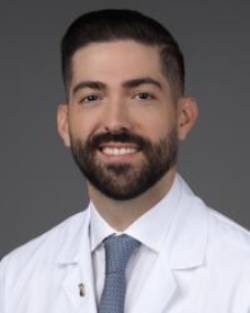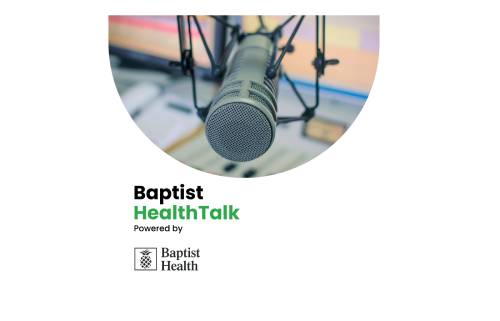
Science
Pinpointing the Source of Seizures: Specialized Unit Aims to Provide Answers
5 min. read
Baptist Health Miami Neuroscience Institute
Seizure disorders are not just an academic or professional interest for neurologist Luis Felipe Tornes, M.D., the director of epilepsy for Baptist Health Miami Neuroscience Institute.
Growing up, he witnessed how the condition deeply affected his father, who had encephalitis as a child and experienced temporal lobe seizures for most of his life. After struggling unsuccessfully for decades to control his condition with medications, his father turned to laser ablation shortly after it was approved by the Food and Drug Administration. The minimally invasive brain surgery uses heat and light to destroy problematic nerves.

Luis Felipe Tornes, M.D., the director of epilepsy for Baptist Health Miami Neuroscience Institute
“He was seizure-free after that — never had a seizure ever again,” says Dr. Tornes, who was in college at the time. “For me, it was such a crazy thing. Throughout my entire life, I saw him having all these seizures — never really controlled, so many meds, side effects and hospital visits. And then he had this minimally invasive surgery and it was life-changing. He went in for surgery and was discharged the next day, and it granted him seizure freedom.”
The dramatic results are part of what inspired Dr. Tornes to pursue a career in medicine, he says. “It had a huge, huge impact.”
Dr. Tornes is excited to lead the expansion of Baptist Health’s epilepsy treatment program at Miami Neuroscience Institute, which recently opened a new Epilepsy Monitoring Unit (EMU) at Baptist Health Baptist Hospital. For patients with seizure disorders, the state-of-the-art unit represents more than expanded access to outstanding care. It’s a chance to change lives, he says.
“It can be difficult for epilepsy patients to find the care they need. This is a big step forward,” Dr. Tornes says. “Baptist Health is showing its commitment to joining the journey of our epilepsy patients, many of whom are affected every day by this disease. It affects not only them, but their families.”
What Is Epilepsy?
Epilepsy is an often misunderstood condition that can be far more subtle than many people realize. New technology and a wide range of treatment options can help patients live full, active lives.
About 3.4 million people in the United States have epilepsy, a disorder in which clusters of nerve cells in the brain sometimes signal abnormally, causing seizures. More people live with epilepsy than Parkinson’s Disease, multiple sclerosis, cerebral palsy and autism combined.
Seizures are prompted by an excessive surge of electrical activity in the brain. They may be the result of genetics or a brain injury from head trauma, stroke, infection or tumors; but often their cause is unknown.
Symptoms can vary widely, from involuntary muscle stiffening to full-body jerking and lapses in consciousness. However, in some cases, seizures are so mild that people are completely unaware that they’ve had an episode, which may last just a few seconds and cause only staring or memory glitches.
Advancements in technology are enabling healthcare professionals to identify the origins of seizures with unparalleled accuracy, Dr. Tornes says.
“The most profound progress has been in understanding the nuances of an individual’s specific type of epilepsy. By accurately identifying both the origin of their seizures and the underlying cause, we are better equipped to develop highly personalized treatment plans for patients,” Dr. Tornes explains. “This precision allows for a broader range of therapeutic interventions, including more-effective medications and surgical options when appropriate.”
What Is the Role of the Epilepsy Monitoring Unit?
Miami Neuroscience Institute’s new inpatient EMU more than doubles the Institute’s previous capacity to assess patients. The large, updated rooms are private and comfortable, with space for a family member to stay if desired. The rooms also are more conveniently located to where technicians and nurses are stationed, improving efficiency.
The EMU allows 24-hour monitoring over several days with continuous video-electroencephalogram (EEG) technology. It provides a safe environment for anti-seizure medication to be withheld, allowing seizures to occur. The EEG records brain activity, helping physicians to categorize the type of seizure and locate its source.
“This is one of the few times we actually want the patient to have seizures so we can identify where the seizures are being generated while they are connected to an EEG,” Dr. Tornes explains. “We want to pinpoint exactly where these seizures are coming from, what part of the brain.”
The assessments allow a multidisciplinary team that includes a neurologist, neuroradiologist, neurosurgeon and neuropsychologist to determine if patients could benefit from surgery or other interventions, Dr. Tornes says. Laser surgery is just one option.
“Today we have a wide range of choices for individualized treatment,” Dr. Tornes says, adding that the approach largely depends on where in the brain the seizures originate. “In addition to laser and traditional surgery, we have advanced techniques that can modulate brain activity with electrical stimulation to interrupt or even prevent seizures.”
These minimally invasive options include responsive neurostimulation (RNS), which sends electrical stimulation to the brain during a seizure to abort it in real-time; deep brain stimulation (DBS), which involves implanting a device to send electrical signals to the thalamus; and vagus nerve stimulation (VNS), in which a device is implanted near the vagus nerve to control seizures.
While the EMU is especially valuable for surgical planning and event characterization, it also can play a role in medication management, Dr. Tornes says. “In a complicated patient who is having many seizures, the EMU provides a safe environment for us to make supervised medication adjustments that maybe we don't feel are safe to do at home due to the risk of having a breakthrough seizure,” he explains.
Serving the Needs of Patients with Seizures
Expanding access to expert care can have a significant impact on the lives of patients, Dr. Tornes says.
“This is definitely a huge step forward. Having this EMU really is going to expand our capability not only to properly diagnose people with epilepsy, but also give them the appropriate treatment,” he says.
That’s particularly gratifying for Dr. Tornes, who was born at South Miami Hospital, graduated from Belen Jesuit Preparatory School and attended medical school at Florida International University.
“Witnessing the efforts that Baptist Health puts into providing the care the community needs is really exciting for me,” Dr. Tornes says. “I’m excited for what the future holds as we continue to grow and expand care for the community. I grew up in this community, so it means a lot to me. It’s very gratifying to see.”
Miami Neuroscience Institute and Marcus Neuroscience Institute at Boca Raton Regional Hospital are both part of Baptist Health Brain & Spine Care. Marcus Neuroscience Institute also has an Epilepsy Monitoring Unit. Both locations are accredited by the National Association of Epilepsy Centers. This year, U.S. News & World Report ranked Baptist Health Brain & Spine Care as among the top neurology and neurosurgery programs in the nation.
Healthcare that Cares
Related Stories
View All Articles
Baptist Health, FIU’s Herbert Wertheim College of Medicine Partner in New Clinical Trial That Could Revolutionize Care for Alzheimer’s Patients
March 28, 2024
2 min. read

Brain Injury Awareness: Understanding Immediate and Long-Term Neurological Effects
March 27, 2024
3 min. read
